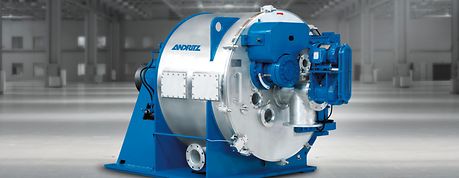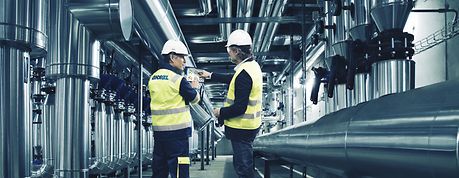
Efficient and profitable brine treatment
Rationalization and automation of the brine treatment process at ACEITUNAS GUADALQUIVIR, Seville, Spain
Aceitunas Guadalquivir, located in Seville, Spain, and founded in 1962 by Francisco Escalante Rivera, is one of the five largest olive processing companies in the world. More than 50,000 tons of table olives are processed in four manufacturing plants and sold in 60 countries. The company’s mission is to achieve the highest quality, the lowest cost, and the best customer service in a sustainable process.
The challenge:
Reducing brine consumption and disposal while recovering valuable oil
Continuous innovation in the final products, services, and process achieved together with the technology suppliers enables the customer to keep creating value with its products. The company processes a huge variety of products,
including green or black pitted and unpitted olives, stuffed, and sliced olives. In all cases, brine is used to condition the olives and move them along the process lines.
This brine is contaminated by solids particles and the oil that the fruits release. A large amount of brine is used every day, and the only way to reduce water and salt consumption was to purify the brine efficiently, removing all contaminants. By extending the useful life of the brine, the costs for water disposal are reduced because there is less contaminated waste, and less storage capacity is required for the waste brine. In addition, valuable oil is recovered, bringing extra revenue.
Our solution:
An efficient and user-friendly separation unit
The solution proposed was new for the customer so we decided to proceed step by step. Aceitunas Guadalquivir tested our equipment on each line, starting with one separator. We designed the separation unit so that it could be moved from one line to the next and connected up easily at each one. The result was a very user-friendly, plug-and-play system, mounted on a skid with wheels. As brine was to be treated, this had to be considered in selecting the construction materials.
The design of the disk stack and inlet/outlet block was optimized to allow maximum possible brine purification while recovering purest oil. A separator with stainless steel cladding was mounted on a stainless steel skid along with the cabinet containing the control panel and power supply. The operating water feed system completes the separation unit. The first separator was a CA41-S – self cleaning, with belt drive, and al lowing automatic washing and cost-effective operation thanks to the low power consumption and reduced maintenance requirements.
Aceitunas Guadalquivir soon saw the excellent performance of the first machine, and three more units were purchased to provide each process line with its own brine treatment facility, one CA51-S and two CA41-S.
Results:
Longer brine lifecycle and exceptional revenue from oil recovery
Launch of the ANDRITZ Frautech separators for brine treatment turned out to be a huge leap forward towards a more sustainable production process. Water disposal, and thus consumption, was reduced dramatically, achieving considerable savings while reducing the environmental impact. On average, 4-5k liters of water are needed daily to run the two smaller lines and 7-8k liters to run the larger line. Previously, up to 18k liters of water were consumed every day, but now the same quantity of water is consumed weekly.
Originally, the oil was recovered by gravity separation in tanks that were exposed to high temperatures, so the separation process took a long time and the oil’s exposure to heat increased its acidity, hence decreasing its value. With our separators, the oil is separated “inline”, just after it is released by the olives. Separation takes place in a much shorter period without needing any kind of storage/settling capacity. Thanks to rationalization and automation of the brine treatment process, the labor costs related specifically to this work were also reduced by 10%. Furthermore, there is no time for the acidity to rise, so the recovered oil is of better quality.

